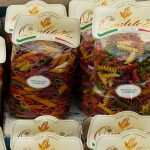You’ve started an online store, and you believe your products are so great they should sell without much “selling” at all. They’re that good.
But what happens when quality products don’t sell online?
When this happens it’s time to put your copy to work. The following tips will help you write effective online product descriptions.
Remember your A-B-C’s and S-E-O’s.
Don’t reprint product descriptions from the manufacturer. You want unique content, which will help your search engine ranking and help to differentiate your brand.
If you are concerned with SEO, think about site structure. SmartInsights.com outlines several important structural aspects. Take heed.
Look at online product description examples.
Speaking of effective site structure, take notes on best-selling product descriptions on Amazon.com. Amazon is arguably the most successful e-commerce website.
Follow a product description template.
If you have 100 products, you don’t want 100 different written formats. I often follow this product description template:
- Headline and sub-headline: Use the product name as the main headline and page title. Write a descriptive sub-headline that moves the story forward.
- 1st paragraph: Lead with something strong. Make it historical, catchy, pithy, or funny.
- 2nd paragraph: Describe features in a way that builds credibility and increases interest. Tell them why they should buy. (More on “the why” next.)
- 3rd paragraph: Motivate action. Talk about guarantees, specials, sales, unique opportunities, and how to buy.
Explain why.
Often, people don’t buy online because they don’t know why they should. To avoid apathy, include the critical details (features) as a bullet list, a caption beneath a photo, or as a line of text next to the shopping cart button, and then clearly explain why someone should buy within the written description.
Let’s say you are selling gourmet sauces. Instead of listing bottle sizes and ingredients and calling it good, why not write a description like this:
Every bottle of pesto is made with locally-grown organic basil. We handpick the best and greenest basil leaves for you and have done so every year for the last 25 years. Many love pesto atop an ordinary pasta and chicken dish, but our rich and fragrant pesto sauce does more. Try it as a bread dipping sauce, salad dressing, and a drizzle over fish.
The copy is telling the reader to buy because the product is local, organic, quality, hand-picked, time-tested, and great for multiple uses, and that is far more compelling than saying “16 oz. for $25.”
Get to the point.
Write short sentences and house them in short paragraphs. You need between 100-150 words, sometimes less and never more.
Hit all the senses.
A picture shows you what something looks like, but it can’t tell you what something tastes, smells, or feels like. Take your descriptions to the edge.
Be accurate or else.
When you describe a product incorrectly you’ll end up with returns and poor reviews. Fatal inaccuracies could be as small as a color description or size description.
What do you think makes an effective product description? Would you buy the pesto?






Just wondering, I write product descriptions for a fairly complicated product, total stations ( a surveying tool that costs between $4500 and $25,000). How long would you say that the product description should be?
I’ve been told to write about 750 words, but this seems to me extraordinarily long, even if it’s an expensive product. What do you think?
With that length you’re looking at a sales page, which is something different. I suppose it depends on how the site is set up/designed. Maybe you could encourage your client to test a few different lengths and see what works best.
Thanks for getting back so quickly Sara.
That is quite long, but I was able to get my client to agree to 500 words (though she’s not thrilled). On the site it’s called an “overview” so I guess that leaves more room for interpretation.